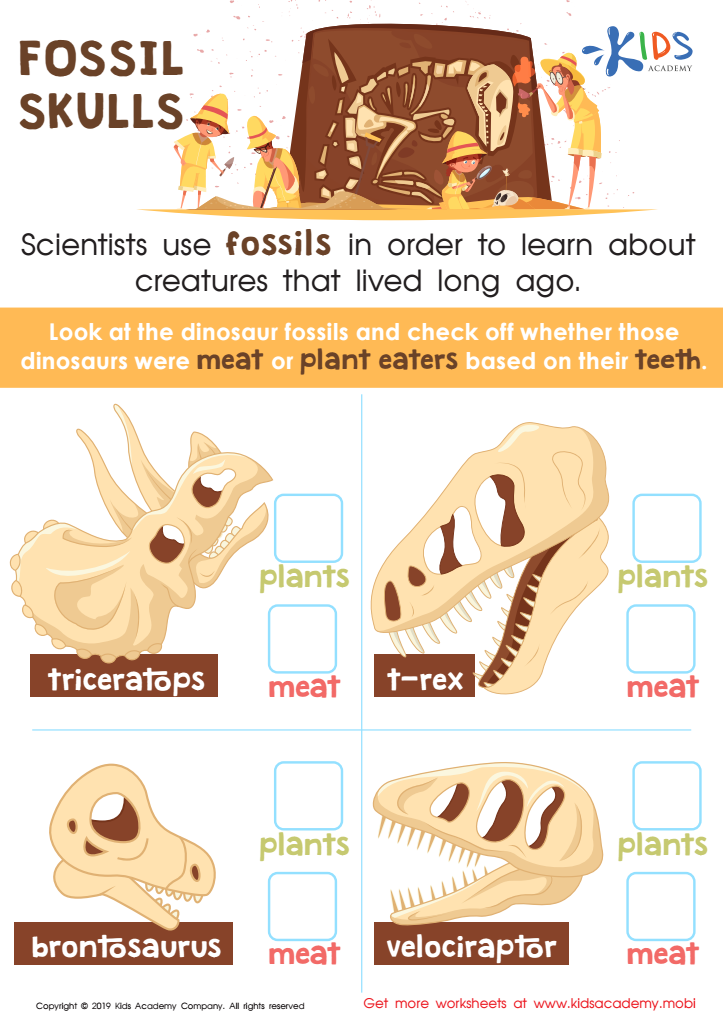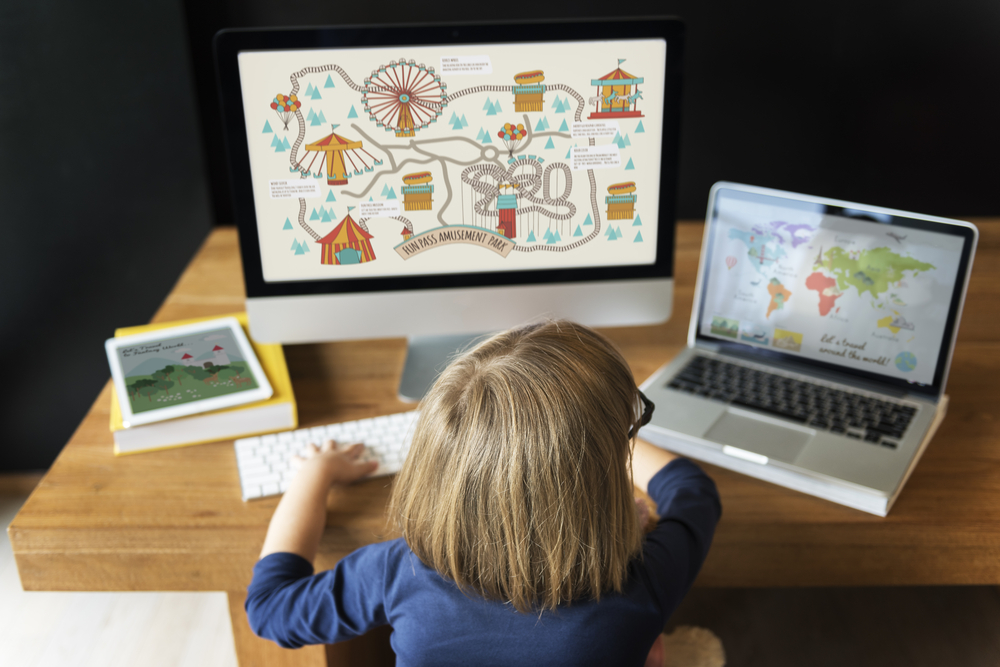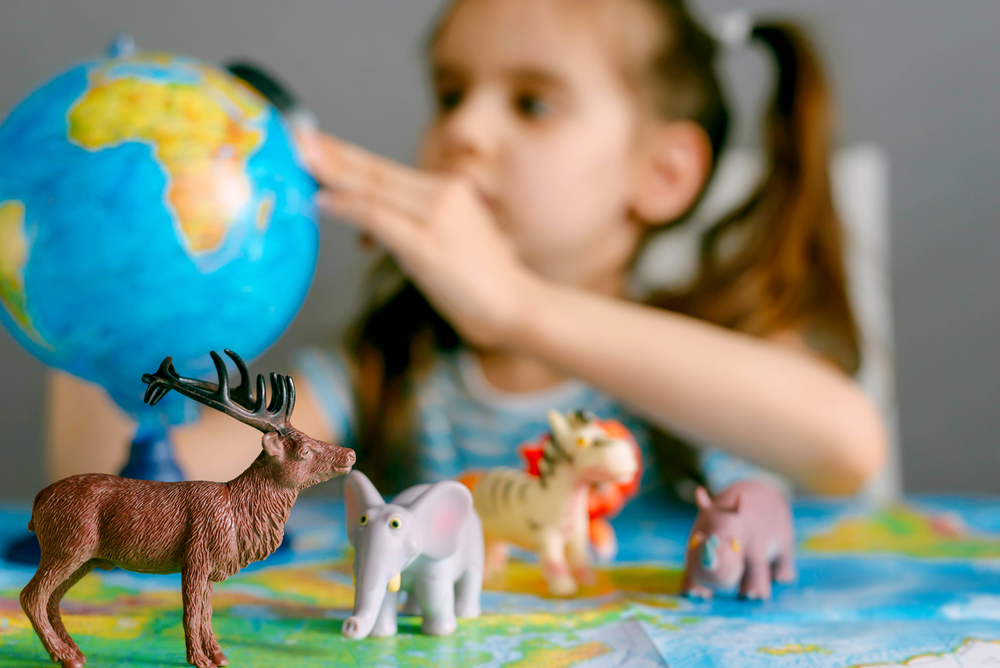Comparing skull structures Worksheets for Kids
1 filtered results
-
From - To


Fossil Skulls Worksheet
Question/Answer
What does the Comparing skull structures skill mean when it comes to Grade 3 Our Planet and Environment learning?
The Comparing skull structures skill in the context of Grade 3 Our Planet and Environment learning involves examining and identifying differences and similarities among the skull structures of various animals. This skill helps students understand how these differences relate to the animals' diets, habitats, and evolutionary adaptations, fostering an awareness of biodiversity and the interconnectedness of life on Earth.
What are some effective activities to train students’ Comparing skull structures skill when teaching them about Our Planet and Environment?
Some effective activities include hands-on comparison of real or replica skulls, using measurement tools to compare skull features quantitatively, engaging students in skull identification challenges, employing digital tools or software for virtual comparisons, and organizing group discussions to analyze differences in skull structures related to environmental adaptations, diet, and evolutionary history.
How to test a Grade 3 student’s Comparing skull structures skills?
To test a Grade 3 student's skills in comparing skull structures, provide them with images or models of different animal skulls. Ask them to observe, describe, and compare specific features like the size, shape, teeth, and eye sockets.
 Assign to the classroom
Assign to the classroom












